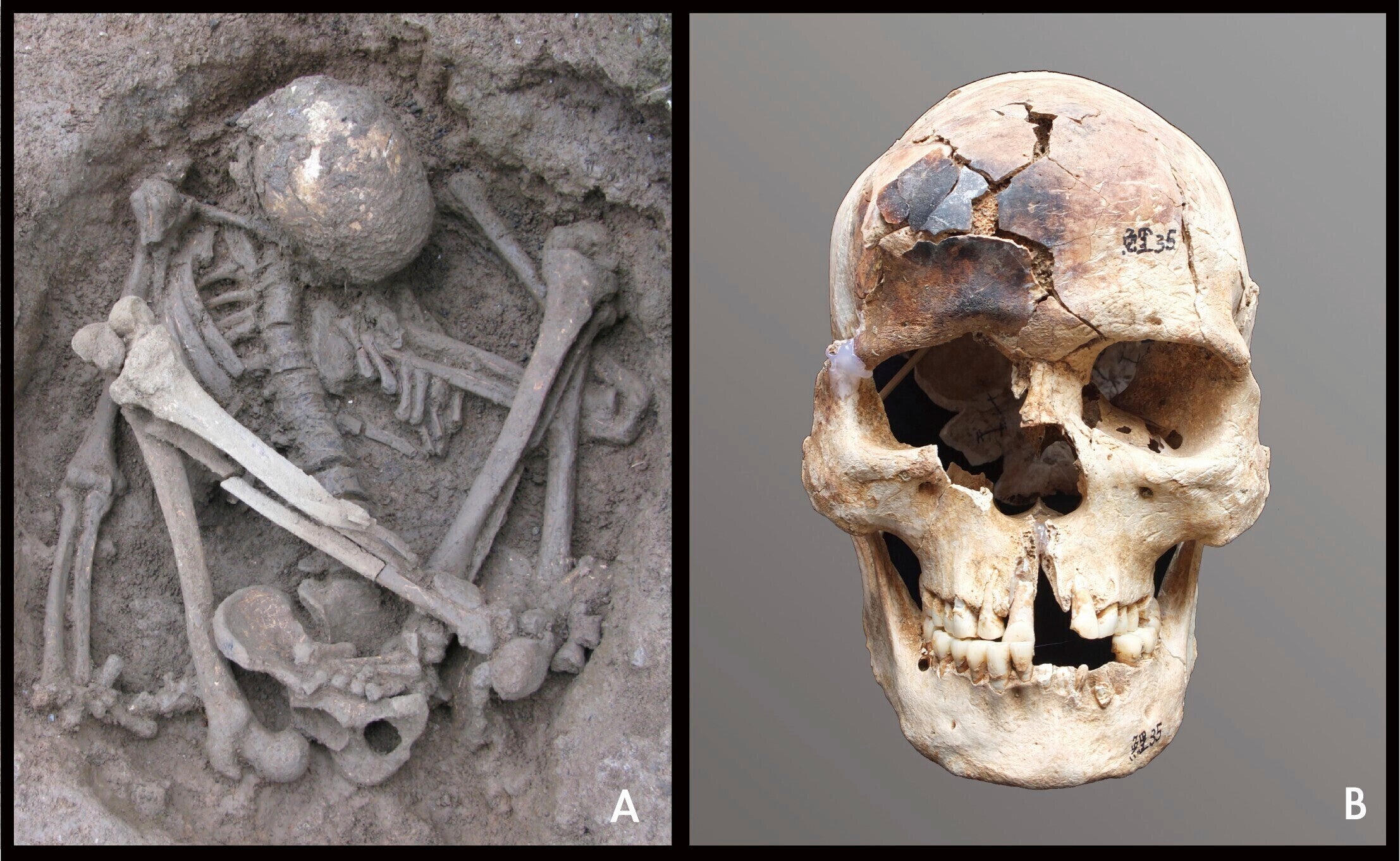The world’s oldest human mummies were preserved using smoke drying techniques 10,000 years ago, new research has found.
A study of dozens of corpses found across 11 burial sites in Southeast Asia and southern China revealed how hunter-gatherers dried the bodies of their ancestors over fires in a tightly crouched foetal position.
The research, published in the journal PNAS, uncovered mummification practices taking place long before the famous Ancient Egyptian mummies, dating back 4,000 to 12,000 years.
Researchers analysed human bone samples from 95 pre-Neolithic archaeological sites across southern China, Vietnam, the Philippines, Laos, Thailand, Malaysia, and Indonesia. Using non-invasive techniques such as X-ray diffraction, they were able to assess whether the skeletons had been exposed to heat, and whether this had taken place prior to burial.
They found many bones were blackened and showed evidence of heat damage, whereas the graves themselves did not appear to have been exposed to fire. However, their findings showed that certain body parts were exposed to relatively low temperatures, with only certain skeletal regions being subjected to direct burning, suggesting a “distinct form of heat treatment” after death.
Researchers said the rituals likely involved burning the bodies with fire and smoke rather than open flames, setting it apart from more conventional cremation practices.

The rituals would have been practiced widely in pre-farming communities across southern China and Southeast Asia, according to academics, who added these practices still exist in some places today.
They said practically, it was likely that the smoking technique was the “most effective” way to preserve corpses in tropical climates - but that the “care and consistency” in the treatments suggested preservation alone was not the only reason to treat the bodies with smoke and fire.
“Among the Anga, for instance, people still believe that the spirit of the deceased roams freely during the day and returns to the mummified body at night,” they wrote. “Among the Taramindjeri of South Australia, mummification is linked to a hope of immortality.
“These beliefs highlight the types of symbolism that might have been attached to the body and its treatment after death.”
They added their findings suggested that smoked mummification might have originated earlier, and been more widespread, than previously thought.
Researchers said this showed “a remarkably enduring set of cultural beliefs and mortuary practices”.
“Our findings highlight a deep and enduring biological and cultural continuity, linking ancient hunter-gatherer populations in Southeastern Asia with modern Indigenous communities in New Guinea and Australia,” they wrote.
“The tradition of smoked mummification serves as compelling evidence of long-term cultural persistence between ancient Southeastern Asian and ethnographic Papuan and Australian mortuary practices. Furthermore, archaeological findings suggest that this tradition may have been known among hunter-gatherer societies across a vast region, for many millennia, extending from northeastern Asia and Jomon Japan to western Oceania and Australia, and possibly farther.
“Through this practice, the smoked and preserved remains of the deceased allowed people to sustain physical and spiritual connections with their ancestors, bridging time and memory.”







